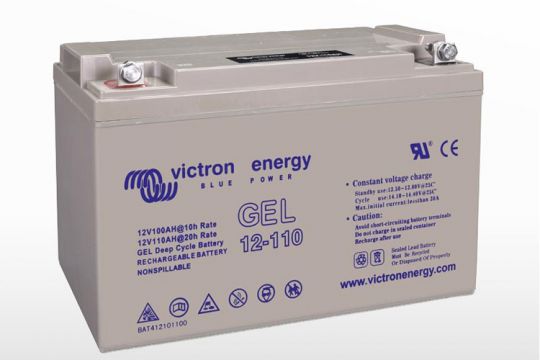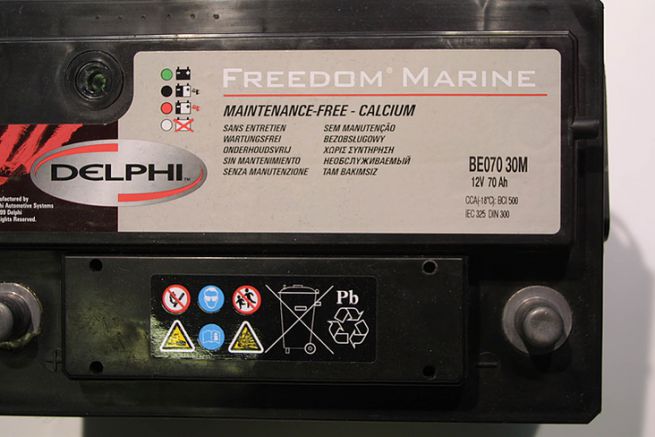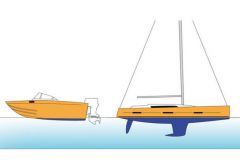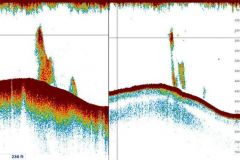Spotlight on the directions!
Take the case of a battery with the following characteristics:
- Nominal voltage: 12 volts
- Capacity C20: 90 Ah (at 20 hours discharge at 25°C)
- Capacity C100: 104 Ah (at 100 hours discharge at 25°C)
- Cycle resistance: 80% discharge 500 cycles, 50% discharge 750 cycles, 30% in 1800 cycles.
- Maximum load current: 18 Amps
- CCA 420A 5 sec.

The nominal voltage expressed in Volt
Lead-acid batteries are made up of cells each delivering a voltage of 2.1V. By connecting these elements in series, it is possible to achieve the required standard voltages, usually 12 V, i.e. 6 elements. For 24 or 48 V systems, 12 V batteries are connected in series.
Tip: Never ride in the same park, heterogeneous batteries, nor mix old and new. The weaker battery weakens the whole!
The capacity, expressed in Ampere hours
This is the number of amperes contained in a battery. When you install a set of 12V batteries to add up their capacities (this is called a battery bank), they are connected in parallel. If they are connected in series, the voltages will be added together, transforming two 12 V batteries into a 24 V park.

In the case of a parallel connection, the sum of the capacities represents the theoretical dimension of the "electricity reservoir" on board. A theoretical capacity, because only 50% of it can be used without causing irreversible damage to your park. It is the C20 capacity that is commercially used to compare battery capacities, here 90 Ah.
The maximum starting current (CCA)
CCA stands for Cold Cranks Amps. This is the maximum extractable current of a battery over a short period of time in an engine starting situation for example. Here our battery can supply 420 A for 5 seconds.
is the important information when choosing a battery to start an internal combustion engine.
Discharge rate
Expressed in C10, C20 or C100, it indicates the capacity of a battery as a function of its rate of discharge. What does that mean?
- C100 = 104 Ah, means that our battery can provide 1.4 A for 100h (104/100).
- C20 = 90 Ah, means that our battery can provide 4.5 A for 20 hours (90/20).
This indication is crucial in choosing a battery to be used for easements. But unfortunately, not all manufacturers offer the same data, making it much more difficult to compare different brands.
The number of cycles
For a battery, a cycle represents a discharge followed by a charge. But be careful, the number of cycles of a battery is a function of the depth of the discharge suffered. In the case of our battery:
- 500 cycles at 80% discharge
- 750 cycles at 50% discharge
- 1800 cycles at 30% discharge
Here we see the immense impact of deep discharges on the life of a battery. Our battery, which is a Gel battery, will only withstand 500 cycles at 80% discharge.
All these parameters have a strong impact on the choice and durability of a new battery fleet for his boat.














